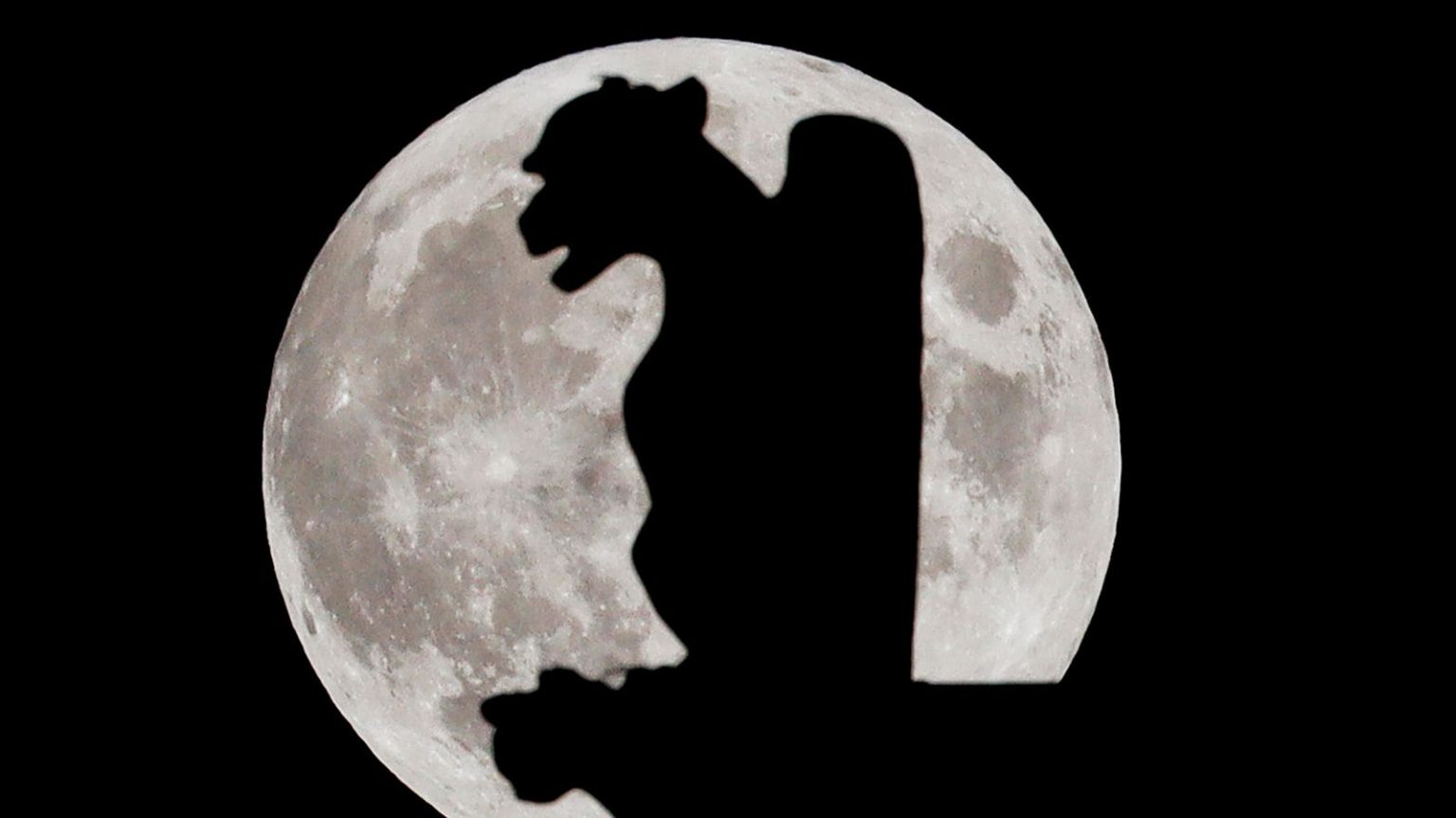October’s full moon, the “Hunter’s Moon,” will rise this week in a blaze of color—and be slightly eclipsed by Earth.
Also called the “Sanguine Moon,” “Blood Moon” and “Travel Moon,” here’s everything you need to know about the full “Hunter’s Moon Eclipse” including exactly when, where and how to see it at its biggest, brightest and most colorful from where you are:
When is the ‘Hunter’s Moon?’
The “Hunter’s Moon” will officially be 100% illuminated at 3:35 p.m. EST on Saturday, October 28, 2023.
Why to Catch the ‘Hunter’s Moon’ at Moonrise
Full moons are most easily seen at their best at moonrise, which occurs at dusk in the eastern sky almost opposite a setting sun in the west. Catch it as it rises and the full “Hunter’s Moon” will look both more colorful and larger than it will at any other time of night—but only for about 15 minutes. It will also be more impactful because it’s being viewed in twilight, not darkness.
Another reason to watch the full moon rise is that Jupiter will hang just 3º below it.
Who Will See The ‘Hunter’s Moon Eclipse’?
Europe and Africa are best placed to see watch the entire event, but it’s a very slight partial lunar eclipse. At the peak of the event about 6% of the full moon will be inside Earth’s dark central shadow, so it may look like a small bite has been taken from it. However, as it drifts through Earth’s lighter, outer penumbral shadow it will mostly just seem less bright than usual.
Best Times to See the Full ‘Hunter’s Moon’
The Hunter’s Moon will officially be 100% illuminated at 3:35 p.m. EST on Saturday, October 28, but there are two successive evenings (for some cities) when timings are good for impressive views of the full moon rising during dusk. Be sure to check the exact moonrise and moonset for your location.
Saturday, October 28, 2023:
- In New York sunset is at 5:59 p.m. EST and moonrise is at 5:51 p.m. EST.
- In Los Angeles sunset is at 6:03 p.m. PST and moonrise is at 6:05 p.m. PST.
Sunday, October 29, 2023:
- In London sunset is at 4:41 p.m. GMT and moonrise is at 4:45 GMT.
- In New York sunset is at 5:57 p.m. EST and moonrise is at 6:21 p.m. EST.
Why the ‘Hunter’s Moon’ Will Look Orange
The moon is grey in color—everyone knows that—but when observed close to the horizon, not only is the full moon less bright than when it’s high in the sky, but it displays a reddish-orange color. As it rises higher it gradually turns to a pale yellow, then to bright white. It’s an illusion. When we look at a moonrise we’re looking at it close to the horizon—through a lot of Earth’s atmosphere.
The reason is Raleigh scattering. Light with short wavelengths—such as blue—hits lots of particles of oxygen and nitrogen and is therefore more easily absorbed and scattered (which is why the sky is blue) while long-wavelength red and orange light more easily passes through, ultimately reaching the viewer’s eyes.
When is The Next Full Moon?
The next full moon after the “Hunter’s Moon” will be the full “Beaver Moon” on Monday, November 27, 2023.
Wishing you clear skies and wide eyes.
Read the full article here





